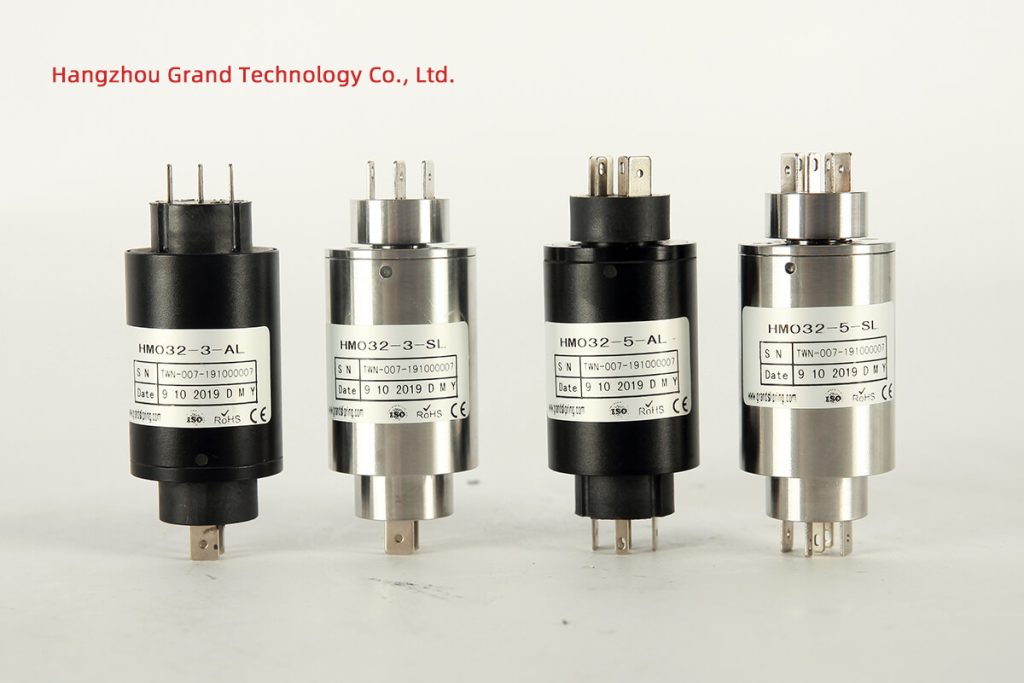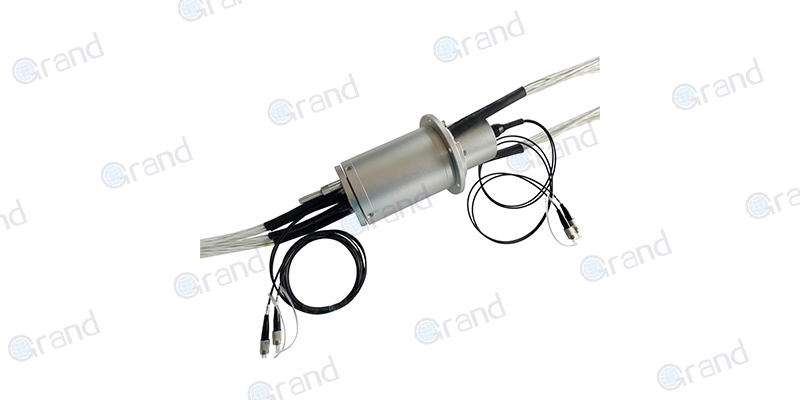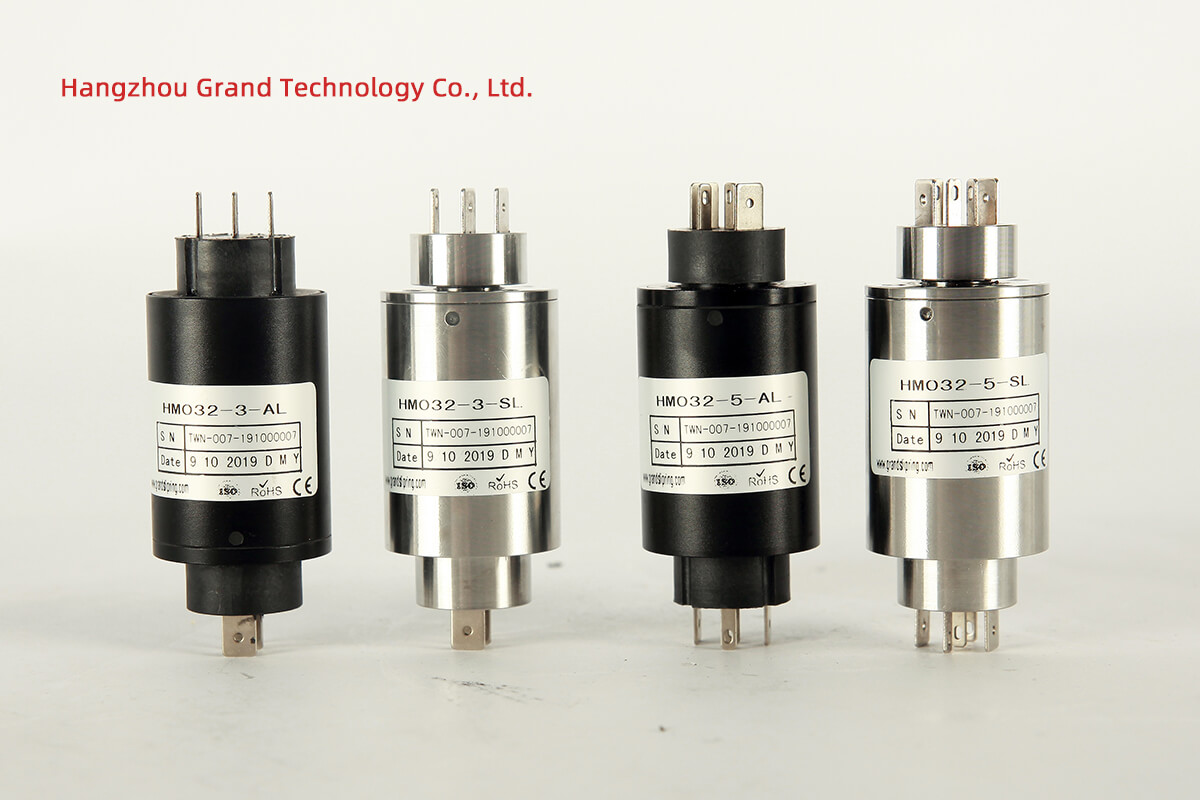This article will unravel various aspects of non-mercury slip rings — a crucial technological component widely implemented in numerous applications. It will delve into the mechanisms, benefits, applications, and maintenance tips related to these slip rings.
Introduction to Non-Mercury Slip Rings
Non-mercury slip rings are innovative electrical connectors designed to transmit power, data, or signals between stationary and rotating components. Traditional slip rings often use mercury as a conductive medium, which poses potential health and environmental risks due to the toxic nature of mercury. Recognizing these risks, engineers have developed non-mercury slip rings that forgo the use of mercury in favor of alternative materials.
These modern slip rings have proven to be highly efficient and effective at transferring electrical currents across a range of applications. As industries become more focused on environmental responsibility and worker safety, non-mercury slip rings have risen in importance and usage. Moreover, they often outperform their mercury-based counterparts while offering added benefits such as lower maintenance and greater versatility.
Non-mercury slip rings play critical roles in various applications across numerous industries, providing reliable and uninterrupted power and data transmission in equipment and systems with rotating parts. By ensuring a smooth connection and efficient overall operation, non-mercury slip rings have become an integral part of modern technology. Their versatility and success in diverse environments demonstrate their vitality in today’s manufacturing, automotive, aerospace, wind energy, and other industries.

Mechanism of Non-Mercury Slip Rings
Non-mercury slip rings are at the heart of many pieces of equipment and machinery, making it possible for an electrical connection to be maintained between fixed and rotating parts. The functioning of these slip rings does not rely on mercury, rather they rely on alternative conductive materials to ensure seamless transmission.
Non-mercury slip rings operate on a fairly straightforward concept. They are comprised of two integral parts: the brushes and the rings. The rings are attached to the rotating part of a machine, whereas the brushes remain stationary. As the rings move, they maintain contact with the stationary brushes, creating a consistent electrical connection that helps transmit power, data, or signals from stationary components to rotating parts and vice versa, thus enabling the system to function properly.
This design is much more straightforward than that of traditional mercury slip rings, which utilize a mercury pool to facilitate the electrical connection. Mercury slip rings require intricate sealing mechanisms to contain the liquid mercury, which can pose a considerable risk if a leak were to occur. On the other hand, non-mercury slip rings eliminate this problem entirely with their solid, straightforward, and much safer design.
When it comes to the construction of non-mercury slip rings, a variety of conductive materials are used based on the requirements of the application, which could include gold, silver, copper, or graphite. The choice of materials ensures a reliable connection that maintains conductivity while dealing with the friction and wear that come from direct physical contact. However, the key selling point is that the material selection does not include mercury, significantly reducing both environmental impact and potential health hazards resulting from mercury exposure.
In this way, non-mercury slip rings provide safer, quieter, and cleaner operation without any compromise on performance. The innovative approach to electrical conductivity without the use of mercury makes these slip rings a more sustainable and safer solution in today’s industrial world.
Benefits of Non-Mercury Slip Rings
The shift from traditional mercury-based slip rings to non-mercury slip rings provides significant benefits, some of which include enhanced safety measures, environmental considerations, lower maintenance requirements, and increased versatility.
One of the most notable advantages offered by non-mercury slip rings is their enhanced safety. The absence of mercury in their design removes both health and environmental risks, as mercury is well known to be both harmful to health upon exposure and environmentally damaging when it seeps into groundwater.
Non-mercury slip rings are environmentally friendly and an exemplar of sustainable technology. Their construction without mercury makes disposal much less hazardous, reducing the rings’ environmental footprint significantly. By utilizing safe and non-toxic materials, these rings contribute towards a greener approach to industrial applications.
In terms of maintenance requirements, non-mercury slip rings prove to be superior as they require much less maintenance compared to their mercury-based counterparts. The absence of a mercury pool means no risk of leaks, and the solid-state design makes them more robust and resistant to wear and tear. As a result, the life span of non-mercury slip rings is often significantly longer, reducing overhead costs and making them a cost-effective solution.
Non-mercury slip rings significant versatility makes them adaptable to a wide variety of applications. Unlike mercury-based slip rings, they can be used in an array of environments, including those with temperature restrictions or where mercury could pose a risk. They also display exceptional performance in applications requiring high-speed rotation and where vibration resistance is crucial.
Comparatively, non-mercury slip rings display similar or improved performance characteristics compared to traditional mercury-based slip rings. As well as the safety and environmental advantages, non-mercury slip rings provide a more stable and reliable transmission, are less prone to signal interruption, and boast a greater lifespan.
In conclusion, non-mercury slip rings offer a superior, safer, and more versatile alternative to mercury-based slip rings, providing a multitude of beneficial features without compromising performance.
Applications of Non-Mercury Slip Rings
Non-mercury slip rings have versatile applications across a wide span of industries. Their features such as robustness, safety, environmental friendliness, and their adeptness at transmitting power, data, or signals between stationary and rotating components make them ideal for various applications.
In the manufacturing industry, these non-mercury slip rings are deployed in diverse machinery and equipment. From heavy-duty manufacturing tools to assembly line equipment, these components ensure consistent and efficient power transmission. The absence of mercury makes them a safer alternative, adhering to workplace safety standards and minimizing hazardous conditions.
Within the automotive industry, non-mercury slip rings play a vital role in critical systems such as steering and power generation. For instance, electric power steering systems employ these components to maintain an electrical connection between the rotating steering wheel and the stationary vehicle structure.
The aerospace industry also utilizes these slip rings significantly. In applications ranging from satellite communication systems to radars and drones, non-mercury slip rings are instrumental. They offer reliable power and data transmission while ensuring safety, given the non-use of hazardous mercury.

In the realm of renewable energy, particularly wind energy, non-mercury slip rings have found substantial adoption. Wind turbines often require slip rings to transmit power and data from the rotating turbine blades to the stationary parts of the system. The durability, reliability, and safety of non-mercury slip rings make them a top choice for these applications.
Other sectors, such as maritime, defense, robotics, and many more, also utilize these slip rings. Regardless of the operating environment, non-mercury slip rings offer smooth operation, environmental safety, and crucially, distinct performance advantages, making them not only a viable but often superior option for a plethora of applications across diverse industries.
Factors to Consider When Choosing Non-Mercury Slip Rings
Selecting the most apt non-mercury slip ring largely depends on application requirements and environmental specifications. As you explore the diverse offerings of non-mercury slip rings available in the market, the following factors should be taken into consideration.
Number of Circuits: The number of circuits you require depends on how many distinct electrical connections you need. Non-mercury slip rings can accommodate multiple circuits, making it easier to transmit different signals or power types simultaneously.
Current/Voltage Requirements: The amount of current or voltage that the slip ring needs to transmit is also a vital consideration. Non-mercury slip rings that are designed for high current or voltage can withstand greater loads, which can be crucial for heavier machinery or applications.
Rotational Speed: Another key factor to consider is the rotational speed in your application. While non-mercury slip rings can handle a wide range of speeds, it’s important to select a slip ring that can operate optimally at your system’s rotational speed.
Durability: Given that non-mercury slip rings involve physical connections, wear and tear is a natural consequence over time. However, the materials and construction of the slip ring can impact its lifespan. Therefore, when selecting a slip ring, consider how durable it is and the estimated maintenance intervals.
Environmental Tolerance: Depending on the environment in which the slip ring will operate, you may need a design resistant to particular conditions. This could include capacity to withstand high or low temperatures, resistance to dust, moisture, or corrosion, etc.
By closely considering these factors – number of circuits, current/voltage requirements, rotational speed, durability, and environmental tolerances – you can make an informed decision while choosing a non-mercury slip ring. These points not only ensure that the slip ring you choose is fit for the task at hand but also enhance the safety and longevity of your operation, thereby guaranteeing the best return on your investment.
Non-Mercury Slip Ring Maintenance Tips
Ensuring the efficiency and longevity of non-mercury slip rings largely depends on regular maintenance and upkeep. Though they are notably durable and often require less maintenance than their mercury-based counterparts, it is still crucial to maintain them properly to maximize their lifespan and keep them functioning optimally.
Regular Inspection: Routine inspection is fundamental to maintaining the efficiency of non-mercury slip rings. Check for visible signs of wear, tear, or damage, and make sure the rotational motion is smooth. Regular cleaning of the contact surfaces may also be needed to prevent contamination build-up.
Lubrication: Depending on the style of the slip ring, occasional lubrication may be required. Consult the manufacturer’s instructions to determine the recommended lubrication schedule and the type of lubricant to use.
Verify Electrical Performance: Periodically, it’s important to verify that the slip ring is performing as expected electrically. Check for signal noise, which could suggest there is an issue. Overheating could potentially indicate a problem with the electrical load.
Replace Worn Components: Even with regular maintenance, parts of the non-mercury slip ring might wear over time. For example, brushes might wear out due to constant contact with the ring. Keep a close watch on such components and, if possible, replace them before a total failure could occur.
Stick to Manufacturer’s Instructions: The manufacturer’s instructions should be your primary guide when it comes to maintenance. The instructions will detail the dos and don’ts specific to the model of non-mercury slip ring you are using.
By following these maintenance tips, you can extend the life of non-mercury slip rings, ensuring the longevity and efficiency of your rotation-dependent systems. Remember, consistent maintenance will help prevent unexpected shutdowns, costly repairs, and other potential operational issues.
Future Trends in Non-Mercury Slip Rings
As technology continues its relentless march of progress, non-mercury slip rings are also expected to evolve and adopt new trends. These future developments are poised to bring further enhancements, making these devices more efficient, reliable, and suited to an increasing array of applications.
Miniaturization: Miniaturization is a key trend across various technology domains, and slip rings are not exempt. We anticipate seeing more compact, yet highly capable non-mercury slip rings developed in the future, catering to the limited-space requirements of numerous applications.
Increased Durability and Reliability: Alongside reducing size, efforts will focus on improving the durability and reliability of non-mercury slip rings. More resilient materials and advanced manufacturing techniques can promote longer lifespans and consistent high-quality performance, even in challenging environments.
Smart Slip Rings: The integration of IoT (Internet of Things) and AI (Artificial Intelligence) technologies could allow future non-mercury slip rings to monitor their performance, detect problems, or predict maintenance needs. Such smart slip rings could significantly optimize operational efficiency and enhance preventive maintenance.

Energy Efficiency: As concerns about energy conservation continue to grow, the demand for energy-efficient devices does too. Future non-mercury slip rings might incorporate features to minimize power loss and optimize energy use, contributing to more sustainable operational practices.
Increased Customization: Given the diverse range of applications for non-mercury slip rings, increased customization is a likely future trend. Manufacturers may offer more bespoke solutions tailored to specific industry needs or unique application requirements.
Keeping an eye on these future trends can help businesses prepare for what’s next and make informed decisions when investing in non-mercury slip ring technology. By adapting to advancements and leveraging them, industries can continue to enhance their systems’ efficiency, reliability, and overall performance.
Conclusion
In light of increasing environmental consciousness and the pursuit of safety in the industry, non-mercury slip rings present a forward-facing solution both in terms of performance and sustainable practices. Understanding these factors helps anyone in need make an informed decision while choosing a slip ring, ensuring maximum functionality and lifespan in their specific application.
See What We Can Do

